When a team of Holt donors travels to Ulaanbaatar, Mongolia, to build homes for four of the most vulnerable families in the poorest district of the city, something so unexpected happens — so stunning and so moving — they decide on the spot to build one more.
Amin-Erdene kneels down to zip up her little cousin’s vest — a shiny, hot pink, sleeveless thing that looks far too flimsy for the weather. It’s early spring in Ulaanbaatar, Mongolia, a high desert region where the temperature can swing dramatically from both season to season and day to day. Yesterday, it reached the high 70s. Today, it’s in the low 30s, but feels even colder — a face-numbing, paralyzing cold that makes you want to curl into yourself like a potato bug.
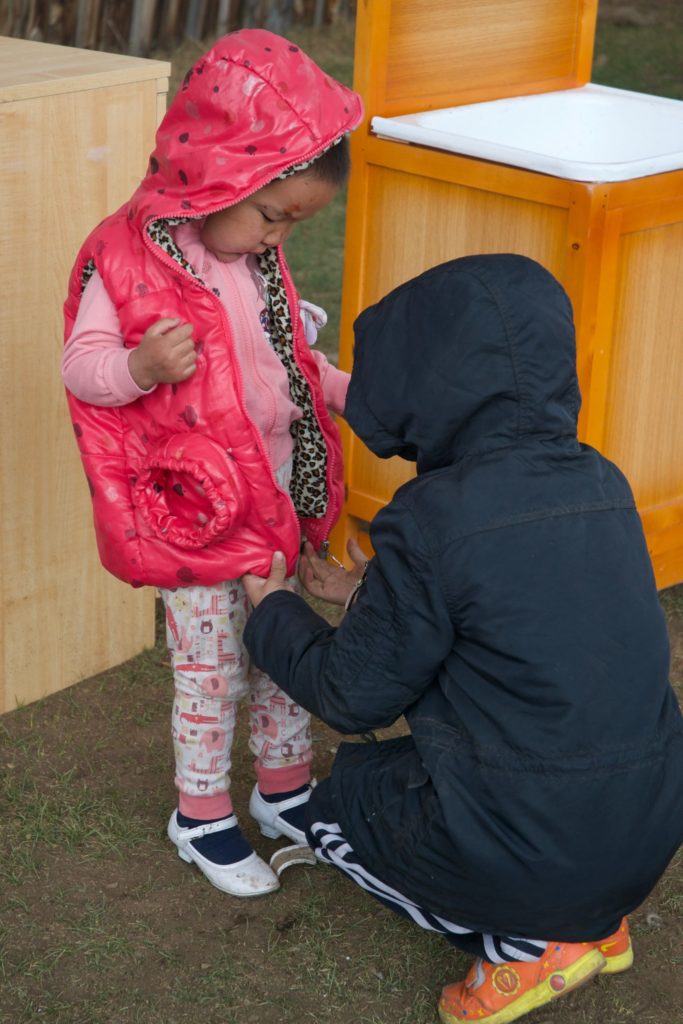
But 7-year-old Amin-Erdene and her cousins seem unfazed.
In a country where in the depths of winter the temperature can drop 40 degrees below zero, this is nothing. Amin-Erdene blankets a heavy coat over her little cousin, who sits in an old car seat outside the crowded ger where they’ve been living. Her feet poke out of the coat, in socks and white-heeled dress shoes that make me think of something our local partner said — how parents will often keep their kids home from school in winter because they’re worried about frostbite, and they can’t afford warm shoes. Amin-Erdene’s older brother picks up another little cousin and snuggles her close to him, kissing her on the cheek.
There’s a hard exterior to these kids. A toughness, and a sadness. Their expressions are often stone serious, and they seem distrusting of outsiders. But to each other, they have a fierce devotion. They are a family. And in that, they find the good.
But today is an especially good day for this family.
Today, a group of Holt donors have come to build Amin-Erdene, her four older siblings and their mother their first permanent home since they left a violent situation over 6 years ago.
The team is made up of 12 individuals who have donated the funds and traveled across the globe to build gers — traditional Mongolian homes — for four of the most vulnerable families living in the poorest district of Ulaanbaatar. Among them are three Holt adoptees, five adoptive parents and three past and present board members. One is the sister of an adoptee. One is a retired elementary school teacher, another a retired public defender. They come from Atlanta, New York and L.A., Boston, Vancouver and Phoenix, Omaha and Dallas and Manchester, UK. Several of them sponsor children. Each of them has a story about what connects them to Holt. But they all have something in common — something rare and beautiful that has brought them together in this remote part of the world.
They are determined to give kids like Amin-Erdene and her siblings what every child should rightly have, without question. A safe and stable home of their own.
“I see myself in the eyes of these kids,” says Kim Hanson, an adoptee and adoptive mom who has traveled from Omaha with her husband — and current Holt board member — Skip. Through the years, Skip and Kim have traveled to several of the countries where Holt has programs, but this is their first time visiting Mongolia.
Of everyone it seems to be Kim who is able to break through the hard exterior of Amin-Erdene and her cousins. They climb in her lap, make silly faces together and huddle close to her for a group hug. Maybe it’s because they too see something of themselves in Kim, who can also seem tough at first — an exterior at odds with the very warm and funny and generous person that I get to know over our six days together in Mongolia.
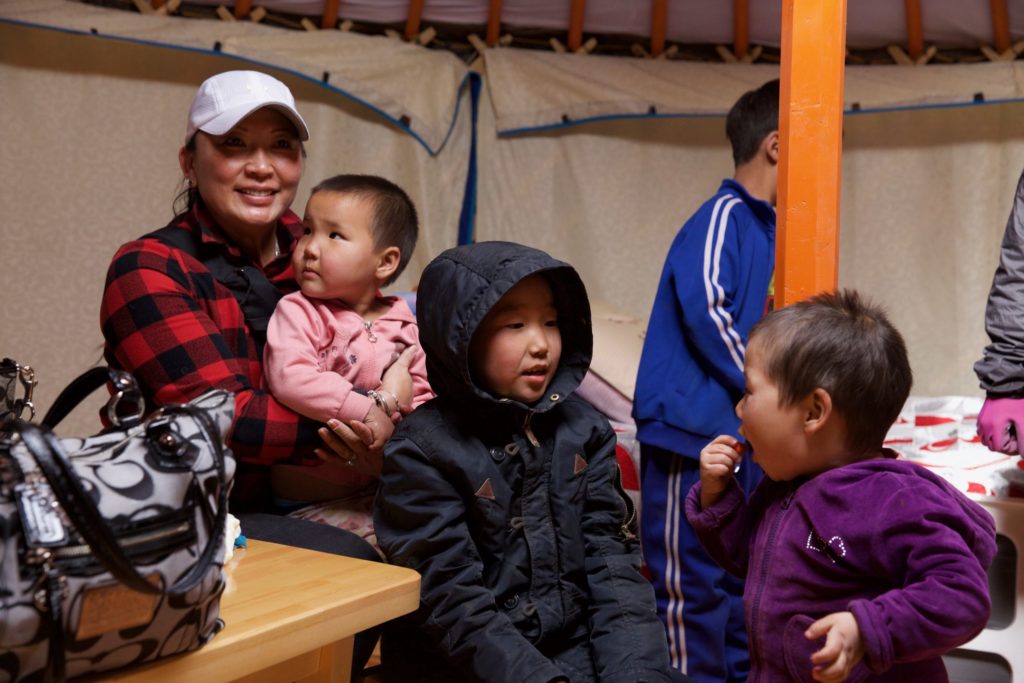
Unlike Amin-Erdene, Kim didn’t grow up with her siblings and cousins and mom in Korea. She spent the first four years of her life in an orphanage before going home to an adoptive family in the U.S. But like these kids, she knows what it’s like to face uncertainty at a very young age — and she sees in their lives a glimpse of what her life might have been like if she had stayed in Korea.
“Year after year, I would see these kids and knew how different my life would have been if I hadn’t been adopted,” Kim writes later, in an email reflecting on the trip. “I feel all of these children around the world are my brothers and sisters and I want to be a voice for them.”
“And it’s by no means their fault or choice to be in such living conditions.”
__________
Thunder claps in the distance and large, dry hail clinks off metal scraps in the yard outside Amin-Erdene’s ger, which her family rents in the Songino Khairkhan district — the “ger district” — of Ulaanbaatar. Strong wind gusts keep blowing their door open, wasting heat before it creaks shut again. Only a padlock will keep it firmly closed.
In this community, families of 10 or 11 people may live together in a single ger roughly the size of a small living room in the U.S. There are no partitions. It is just one single room with a coal-burning stove in the center and a hole in the roof to let smoke out and daylight in. They have no plumbing, no central heating.
And nowhere to go to be alone.
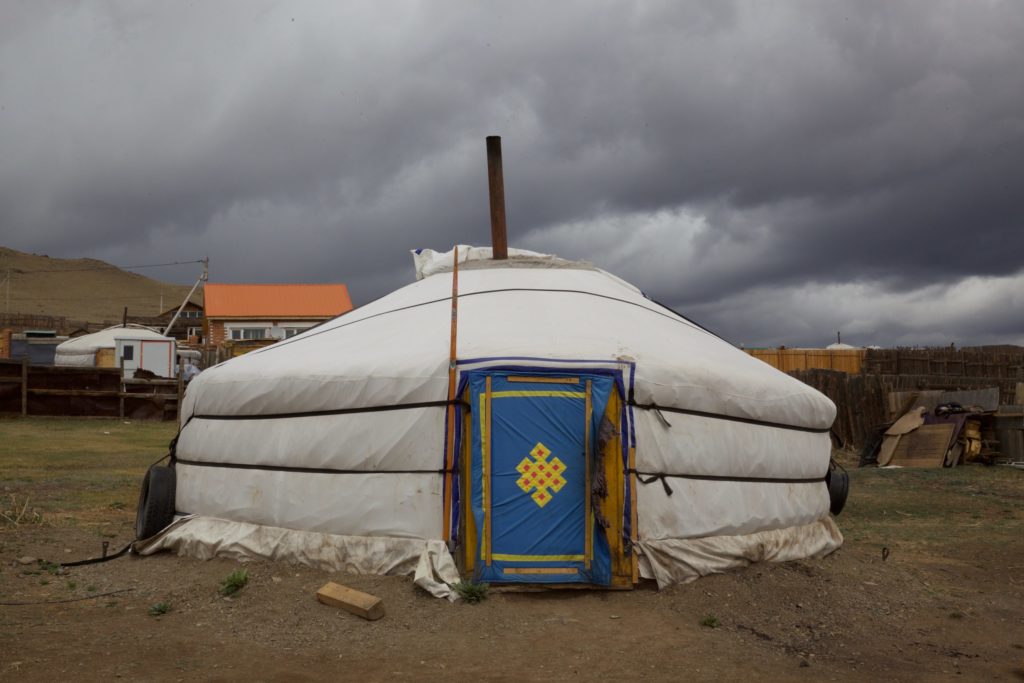
This in itself is a major obstacle to keeping families together. “When children have to share a crowded ger, kids are more apt to run away — just to get away from that situation,” explains Paul Kim, Holt’s director of programs in Korea and Mongolia. “Our focus is to prevent separation, because once that child leaves home, it’s far more difficult to restore the family integrity.”
When kids run away, they often end up living on the streets, or underground— seeking heat during Mongolia’s long frigid winters from the steam pipes that meander under the more affluent parts of Ulaanbaatar.
“Much of Ulaanbaatar receives heating in the winter months from steam generated from coal power plants,” explains Paul. “Throughout the city, you can see massive pipes swaddled in layers of insulation, which transport the steam. Under the streets are more pipes, which during the bitter cold of winter offer a source of heat for homeless children.”
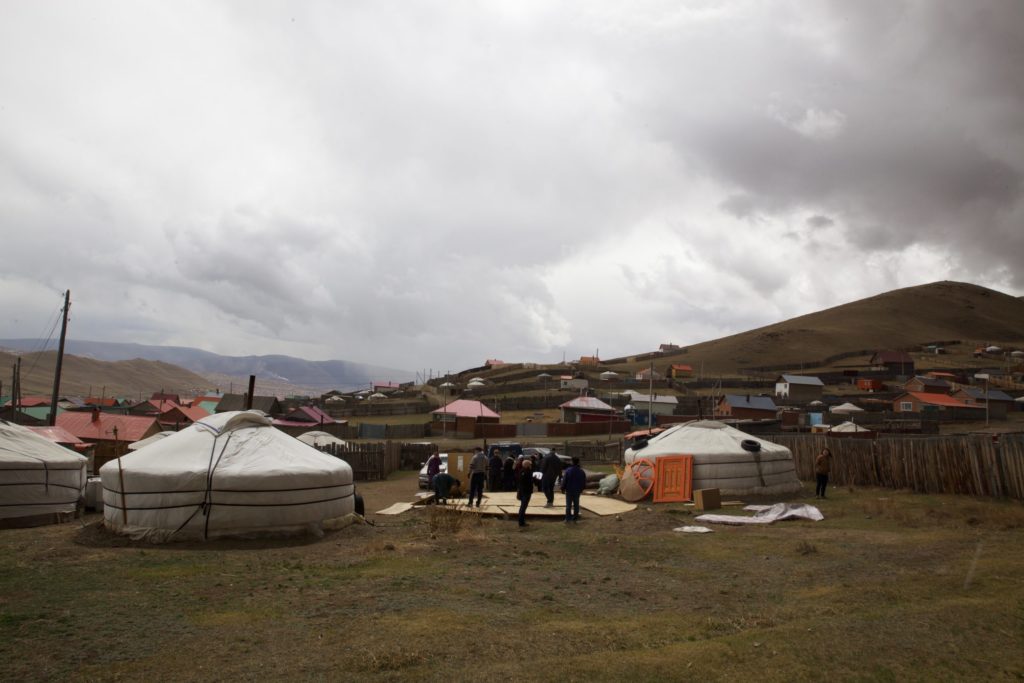
In the morning, it’s not uncommon to see children emerging from manholes — the only indication of the city’s vast subterranean civilization. But underground is not a safe refuge for anyone, much less children.
“The conditions below are terrible; dark, unsanitary and dangerous,” Paul says. “Each winter, children seeking shelter are burned or even killed by high pressure steam erupting out of broken pipes.”
Our goal, as Paul explains, is to keep children in the safety and warmth of their families.
Inside a well-maintained ger, families manage to stay warm through Mongolia’s long winters. Round and windowless, and wrapped in insulating layers of felt made of sheep’s wool, gers are relatively well designed to conserve heat. When it’s time to sleep, a family will roll mattresses out on the floor around the stove, which they keep burning all night during the long winter months.
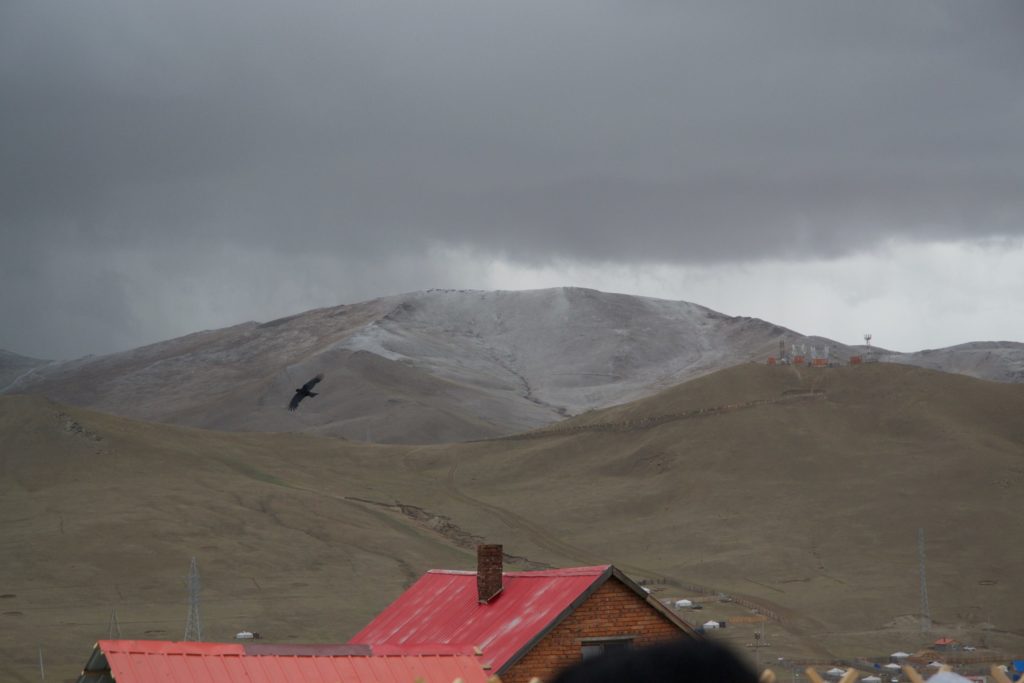
Surviving the winter in Ulaanbaatar, however, is a short-term trade-off for long-term health. To stay warm in a ger, families burn coal. And if they can’t afford coal, they burn tires or trash — creating a thick haze of toxic smoke over the ger communities. But as about 70 percent of Ulaanbaatar’s population lives in gers, the smoke creeps into ever corner and crevice of the city. Respiratory illness is a major cause of premature death in Mongolia, and Ulaanbaatar’s air is among the most polluted in the world.
“The biggest hardship facing our families is not food,” says Gantuul Bata, a member of Holt’s team in Mongolia. “They can go hungry for two or three days. But to keep warm in winter, coal is very expensive, so they go to the trash site and burn whatever they can find. In winter, the smoke and smell is awful.”
In Mongolia, it’s a privilege, Gantuul says, to live in an apartment with hot running water and central heat. “I never lived in a ger,” she says. “It’s a very difficult life.”
But for Amin-Erdene and her family, and many of the families Holt donors support in Mongolia, living in a ger is a life far easier than the one they have known.
“Some of these families have been homeless for 13 years,” explains Paul. “We’re talking about families that may have a mom and dad, or maybe just a mom, maybe just a dad, two, four, five, six, sometimes eight kids. They’re trying their best to survive.”
_________
For six years, Amin-Erdene and her siblings lived under the stairs of an apartment building, where their mom worked as a maid. Their mom is a slender woman in her early 40s, dressed in all black but for white sandals with little rhinestones on the straps. Her dark hair is cropped short and pulled back in a clip, and she wears no makeup on a face marked by smile lines that deepen into a warm and lovely expression as she stands in the doorway — her arms draped around her daughter. Amin-Erdene’s mom tells us that her husband was an alcoholic, and when she and her children could no longer endure his abuse, they moved out of their mother-in-law’s ger into the basement of the apartment building. She has five children, including four boys, ages 7-19, and Amin-Erdene, her only daughter.
When her family came to the attention of our staff in Mongolia, child sponsors in the U.S. began providing monthly support for Amin-Erdene and her 10-year-old brother, and with the support of Holt donors, the family received funding to move out of the basement and into a rented ger next to her younger sister’s ger. Amin-Erdene’s mom now works nights at a pub, which supplements the funding she receives from sponsors to support her children and the small welfare check she receives from the government.
A week ago, Amin-Erdene’s mom and her children learned that a group of donors would be traveling from the U.S. to build them a brand new ger — a permanent home of their very own.
“Seven days ago, I was told that Holt donors were going to donate a ger and furniture,” she says. “Since then, for the whole seven days, we were very excited. I could barely believe it. I cried a lot, because this is my dream.”
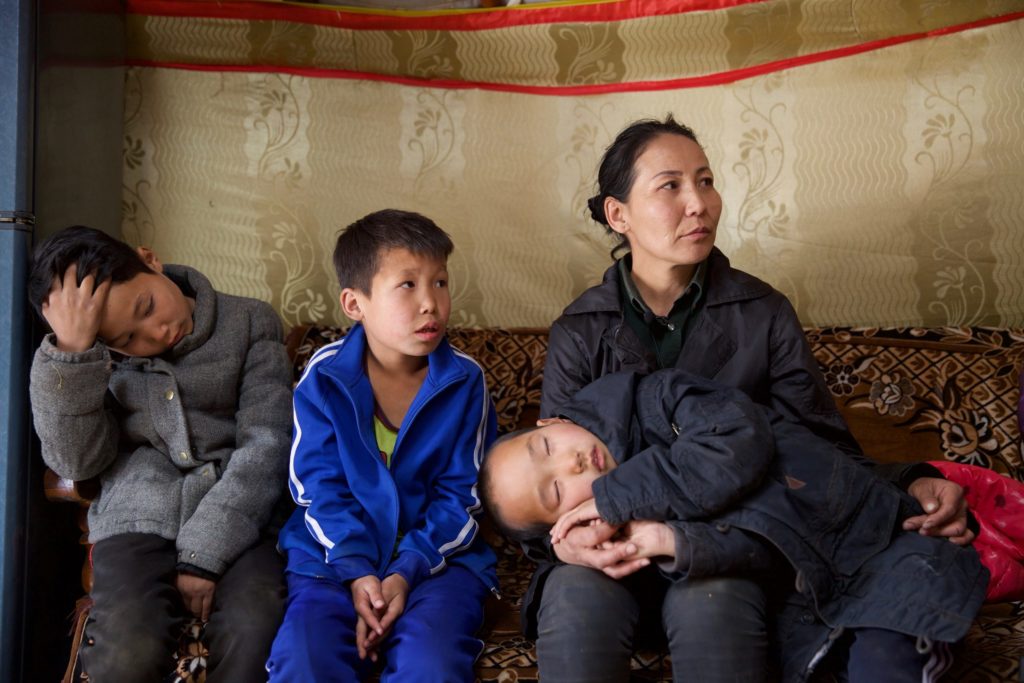
Amin-Erdene and her mom and siblings have moved to the couch, and Amin-Erdene rests her head in her mom’s lap, intertwines her fingers with her mom’s and closes her eyes. She is still wearing her coat, but the hood has fallen away from her head. Her black hair is cut close to her scalp. It is shorter than her brothers’.
For Amin-Erdene, a new home means she can grow her hair out again.
“All the kids have lice,” explains Gantuul. It’s a chronic problem in the ger communities, as are diarrhea, ticks and skin rashes. In the summer, they can bathe in the river. But in wintertime, it’s so difficult to walk to the well, pump water into jerry cans and push the water cart back up the icy hills and ravines of the ger district, that many families don’t bathe for months at a time.
But as part of their gift to the four families, Kim and her fellow donors have not only bought the materials for a ger — they provided each family with furniture and appliances, including a small washing machine.
“The washing machine will help get rid of the lice,” Gantuul says of Amin-Erdene as she sleeps in her mother’s lap. “I promised her she could grow out her hair again.”
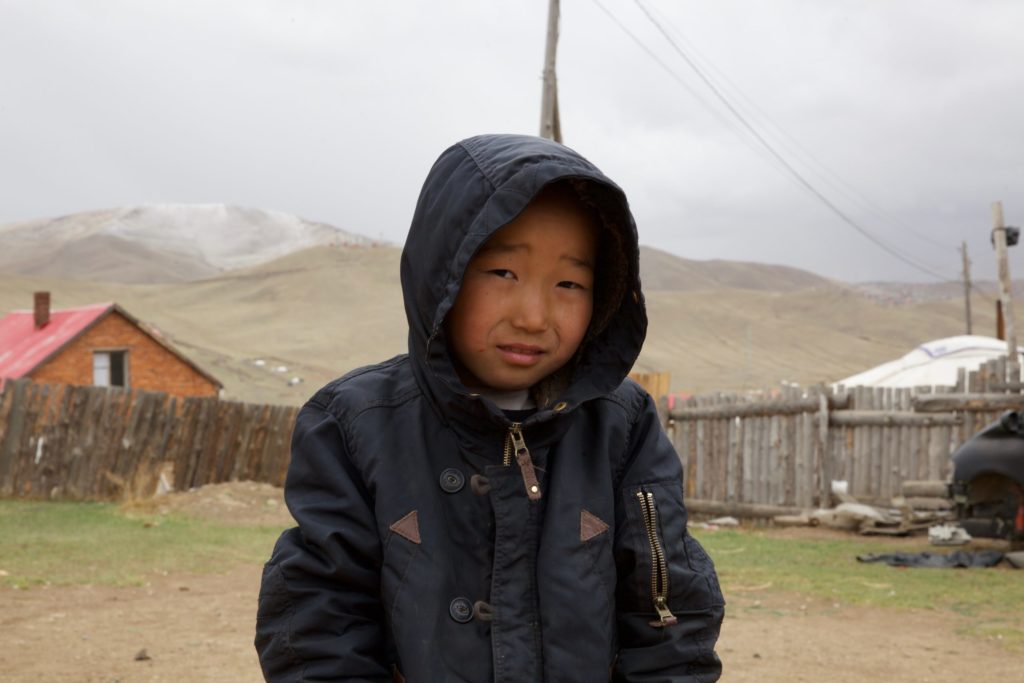
________
At the end of the day, once Amin-Erdene’s ger is constructed, Paul stands outside as the team moves their new furniture inside.
“What we were able to accomplish here today was not just give a family a house,” Paul says, his voice barely audible in the wind.” We gave them a place that offers security and warmth — and a place where a family can stay together.”
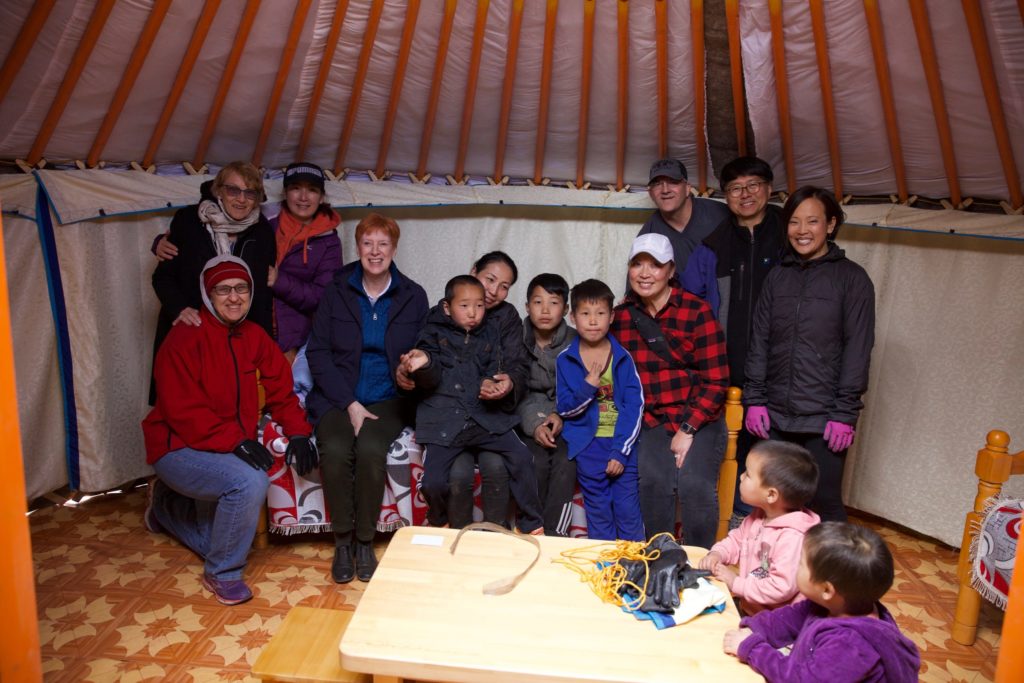
By providing a place of their own, where they have privacy and permanency and more resources to spend on food and clothes, coal to heat their ger and other things they need to survive, these 12 extraordinary people — Robyn and Carol, Linda and Joy, Donna, Alex, Erna and Seri, and Mary, David, Skip and Kim — have built these families the foundation for a new life.
Alongside the Holt sponsors who support Amin-Erdene’s family and our staff who work in the field, they are working to ensure that need and desperation doesn’t cause the children to run away — or cause their parents to relinquish them to someone else’s care.
“You have families where the parents just love the children,” says Paul. “But without a place to stay in an environment so harsh… gets tough. And for so many of the families who don’t have places to stay it means possibly abandoning their children to the care of someone else, in the desperate hope that the children will then get food and shelter.”
_______
A couple miles from Amin-Erdene’s ger — down a hill, past a gulley, right of a small store and up another hill — sits the school where Amin-Erdene and her 10-year-old brother walk every day. There are no street signs in the ger district, and Gantuul expertly navigates the rough terrain by memory — taking shortcuts to families she has visited countless times.
The school is an informal, one-room schoolhouse for kids who have dropped out — or never attended — public school. Many of their families make a living from scavenging recyclables from the trash dump that sits atop the hill, overlooking the city. Some are homeless, or near homeless, living in makeshift shelters built of scraps found in the dump. For these kids, this school is more than just a school. It provides the things a home should provide — hot cooked meals, often their only one each day, water and soap to clean up with, freshly laundered clothes, and a warm, bright place to study next to an electric radiator.
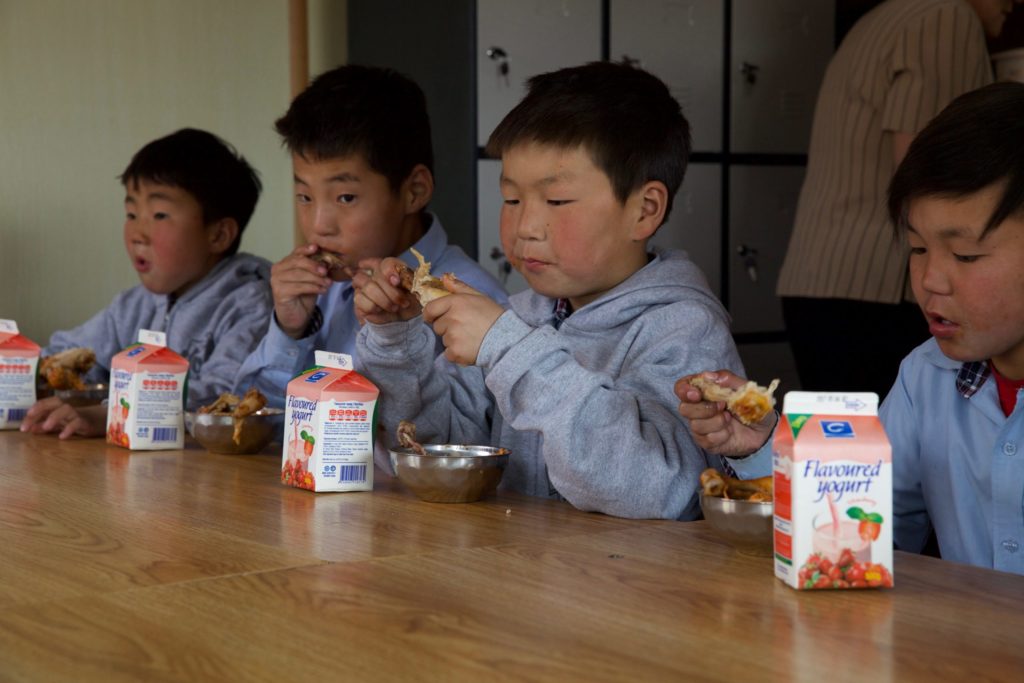
About 30 kids attend this school, called the “Red Stone School,” in two shifts each day. They know each other well, and they understand each other. Here, no one is bullied for smelling bad or having filthy clothes or having parents who dig through trash to survive. Here, they belong.
But as in any social group, there are differences. Some kids have more than others. Some kids have parents who struggle with alcoholism. Or they feel embarrassed or jealous or sad when they see where other kids live, and how it compares to where they live.
For some kids, living in a ger would be like living in a palace.
_________
On the afternoon of the “ger dedication ceremony,” the families to receive gers gather together outside a community center in the Songino Khairkhan district. They came to meet our donor team, and participate in a formal ceremony with government officials. Paul and Skip deliver speeches, and everyone gets a bit emotional as the donors meet the families, and the families meet the people who are helping them start a new life for their children.
But one person in the crowd is feeling a different emotion at the sight of this event. One boy, about 12 years old, stands at the gate, yelling and crying. He is a boy who lives in the district, who is a classmate of Amin-Erdene and her brother at the Red Stone School. He wants to know why his family isn’t receiving a ger. He doesn’t understand. His family has lived here longer, he says.
Later, our Mongolia staff explains why they chose the four families that would receive gers — and why this boy’s family wasn’t one of them.
We don’t have the resources to build a home for every family that needs one. It’s a tough decision. But wherever Holt works, our goal is to empower families to lift themselves out of poverty. Sponsors and donors provide the tools and resources, but families have to provide the drive and hard work. A ger is an investment that they can use to build a more stable future for their children.
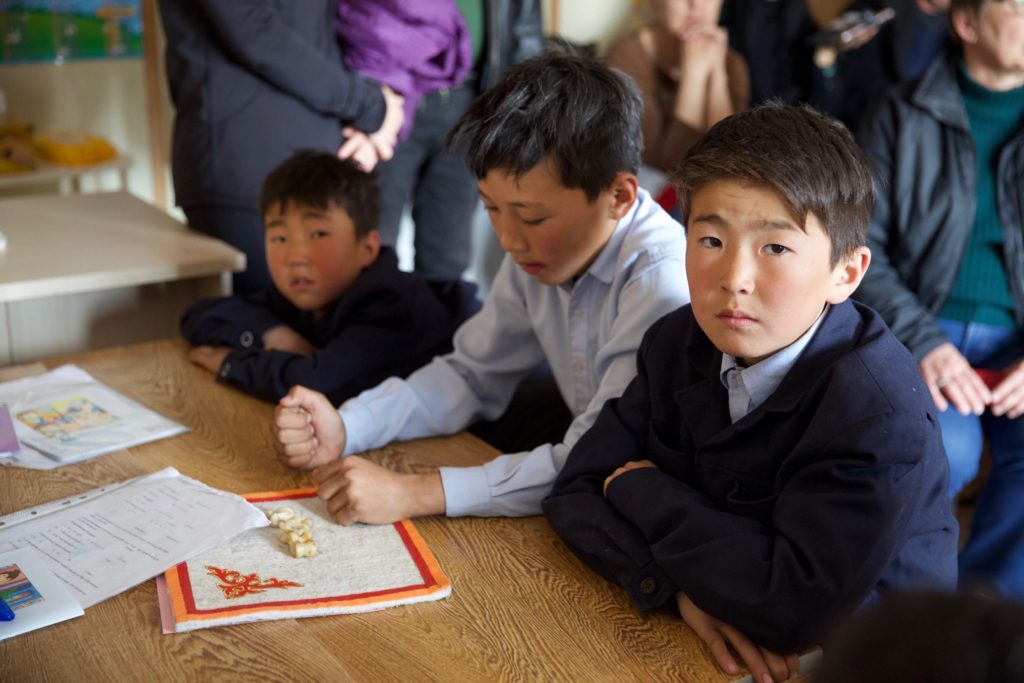
“When you have so many families in need, deciding who receives aid is a difficult and often heartbreaking decision that we have to make,” says Paul. “There are an estimated 65,000 families living in poverty in this district alone. We have a responsibility to our donors to be good stewards of their gifts.”
But as our staff explains, this boy’s parents — like so many of the parents who live and work in the dump and surrounding area — were known alcoholics. While donors provide hot meals, clothes and an education for this boy and his younger brother through the Red Stone School, our staff worried that their parents would squander on alcohol any financial help they directly received for their children — and that with the gift of a ger, other families would work harder to build on the donors’ investment in their future.
“For some of the families living here, alcoholism has greatly compounded their already difficult life. What is so especially cruel about this,” Paul says, “is that historically, the year-round consumption of alcoholic drinks was not a part of Mongolian culture. Traditionally men here would not be permitted to drink until after age 30, and even then it was a mildly fermented mare’s milk, available only seasonally.”
But after Mongolia and the Soviet Union began forging close relations in the 1920s, everything changed. “With the Soviets came urbanization, industrialization and,” Paul says, “vodka.”
________
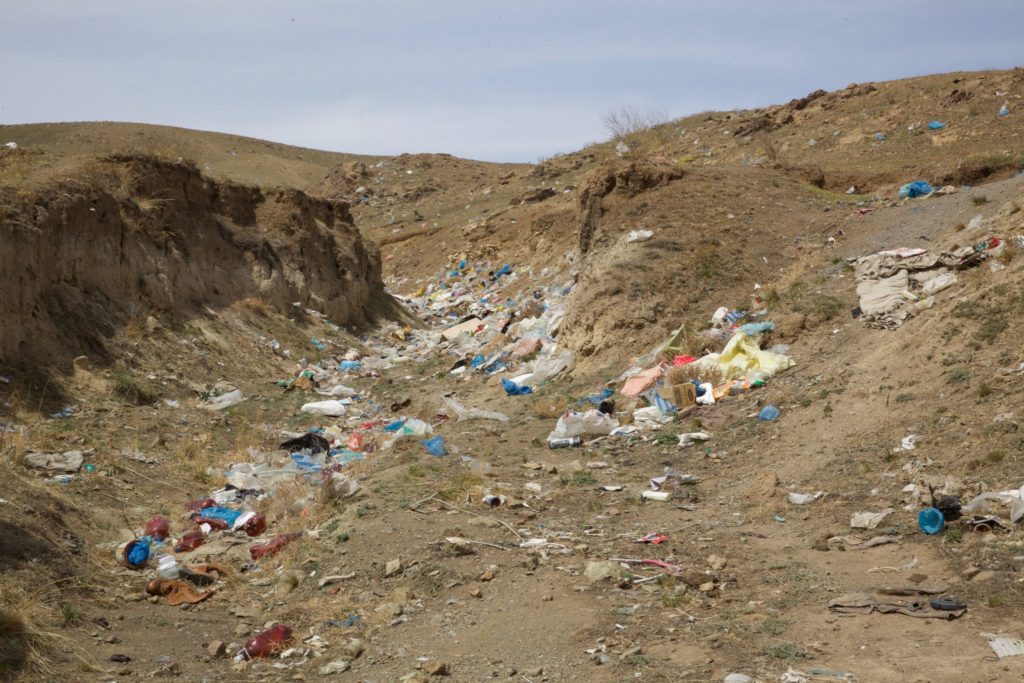
On the following afternoon, after visiting the Red Stone School, our team decides to hike up the hill to meet a few of the families who live in the surrounding area. An ice-cold wind blows against us as we walk, but it’s a clear sunny day and the sun glints off the plastic bags that have blown down from the garbage dump and scattered over the hillsides, becoming a permanent part of the landscape. We climb down through a ravine littered with bottles and boxes and plastic bags everywhere, careful to avoid the wild dog that’s eyeing us from a few yards distance, to a couple gers that are the only homes on this particular hillside. No fence marks the property lines, and very likely these families have migrated here from the countryside in search of work and are living on this land without the required registration documents.
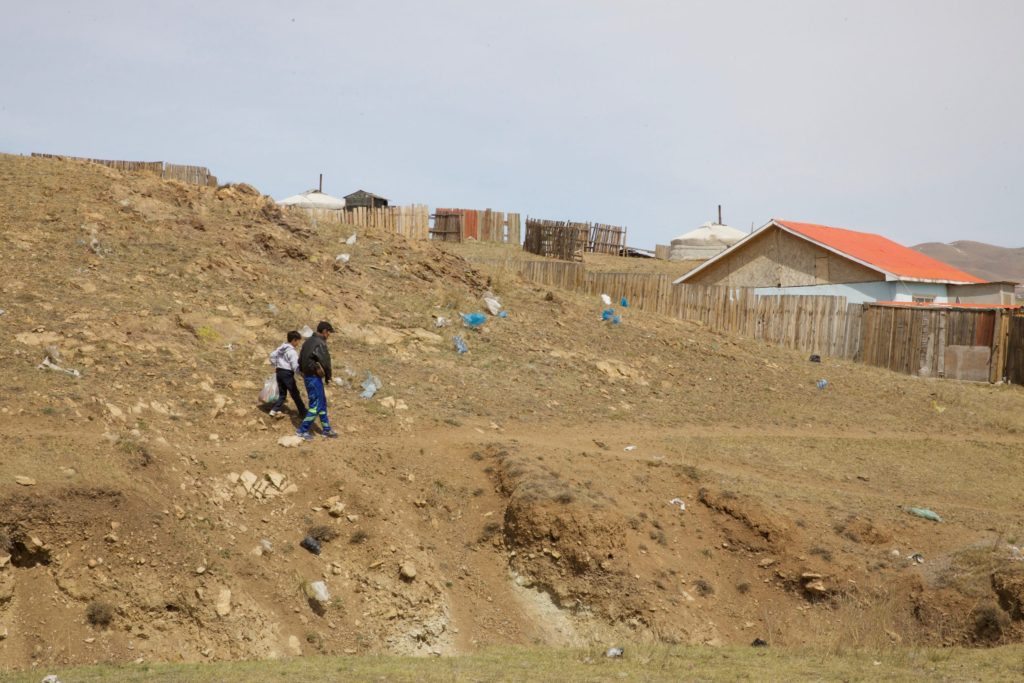
Across the way, we see a young boy and his father hiking up the hill. The father has a limp, and is holding his son’s hand. Under his other arm, he carries a pair of work boots. The boy carries a plastic bag full of bor tsog, the fried bread that is a staple of the Mongolian diet. He is wearing a gray sweatshirt, mismatched shoes, one black and one white, and pressed navy blue pants that are clearly part of a school uniform. This is a boy we know — a boy we just met at the Red Stone School.
Up the hill a ways at the edge of the ravine is a small shack lined with mud and cardboard. This is their home.
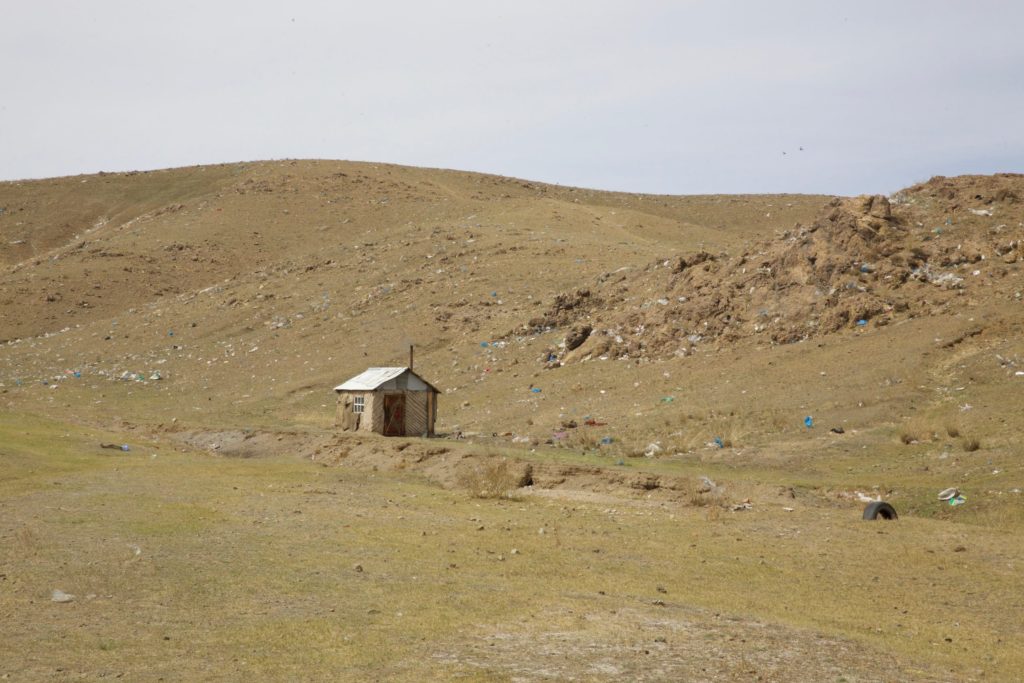
As our staff shares that this is the younger brother of the boy who stood at the fence yesterday at the ceremony, screaming and crying, as we look at their home and connect the dots in our minds, a stunned silence takes hold. Several members of our team walk away in tears.
In this moment, Kim and Skip decide to give this family a ger, too.
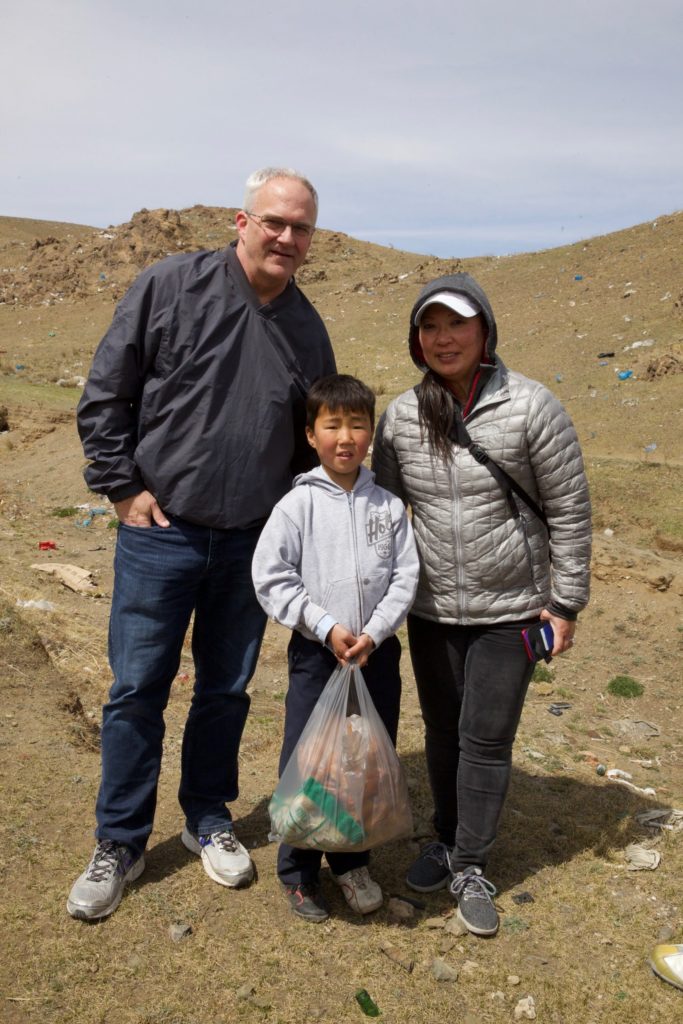
“Sometimes God puts people in your path,” says Skip, after our staff calls the father and son over to share this news with them. The wind whips at Kim and Skip as they stand arm in arm before the family’s shack — soon to be their old home — in the background. “Sometimes you’ve just got to touch people’s lives and hope that they make the best of it and it helps them in their lives.”
“And it’s no fault of the children,” Kim adds, wiping tears from her eyes.
“It just touches us. And having kids of our own…,” she says, pausing as though finishing a thought that she doesn’t wish to say aloud. “Every child should have a nice warm home to go to every day.”
_______
Later we learn more about this family. We learn that the boys’ mom attended cooking school, but she struggled to find a job as the country transitioned to a free market economy in the early 90s. We learn that like so many families at that time, they migrated from the country in search of work in Ulaanbaatar. We learn that the boys’ father found a job in construction, and he provided well for his family. They had their own ger, and they lived a relatively good life. But then their father suffered a stroke and could no longer work. The family sold everything they owned to cover his medical bills, and they still struggle to afford his medicines. We learn that like Amin-Erdene’s mom, these boys’ mom worked as a maid in an apartment building — and they spent the past winter living in a small space under the stairs.
“My biggest concern is not having a place to live,” the boys’ mom shares with us. “When we had a place to live, the kids were calmer, but now I see behavioral changes happening.”
We ask the older brother, Tugs-Erdene, why he was so upset at the ceremony.
“Before, we had our own ger and my mom worked and earned money to feed us,” he says. “We never felt hungry or thirsty when my mom and dad worked. But then my dad had a stroke.”
In the communities, there’s a noticeable difference in attitude and awareness between the older and the younger kids. Right around 10 years old seems to be when they start realizing that their lives are harder than other kids’ lives. And although just a year older, Tugs-Erdene seems more far more serious than his younger brother — who smiles and fidgets and tells us that when he grows up he wants to be a famous boxer and raise the status of Mongolia in the world.
Tugs-Erdene’s mom cries as we talk to her about how a ger will change her family’s life. She is embarrassed, she says, that people think they are alcoholics, and she promises to make better decisions for her children.
“That day was the most incredible and happiest of our life,” she says of the day that Skip and Kim decided to give their family a ger. “The four of us could not even sleep that night and all night we talked about our new ger.”
We ask Tugs-Erdene what he would like to say to the people — as our translator says, to the “brothers and sisters” — who donated a new ger to his family. He sits politely, his hands crossed in his lap, biting a lower lip that seems to tremble a bit as he talks.

“I will become a good and strong man like these people,” he says, “and in the future I will help others who need support. And we will take good care of our mom and dad. We will make them happier.”
About three weeks later, we receive photos of the boys standing in front of the latticework frame that will become their new home. Tugs-Erdene stands alongside his younger brother, his parents and the Holt Mongolia social worker who works with the kids at the Red Stone School. The sky is lit up behind them in a rose-colored sunset, and Tugs-Erdene stands proudly, his head held high.
And for the first time since we met him, we see his smile.
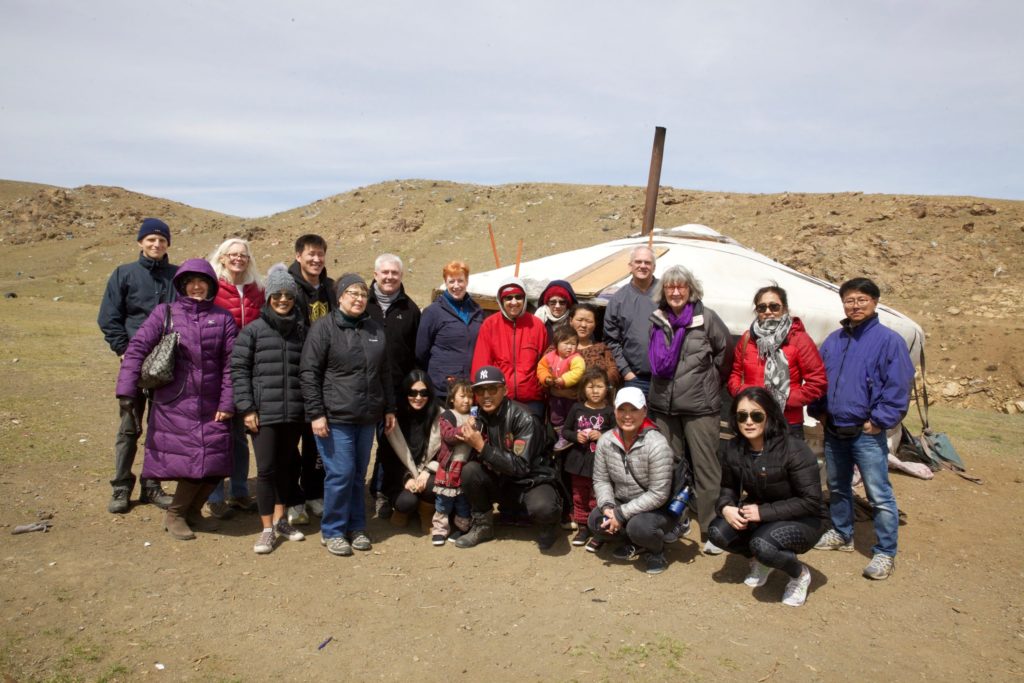
Photos & Video by Daniel Hespen
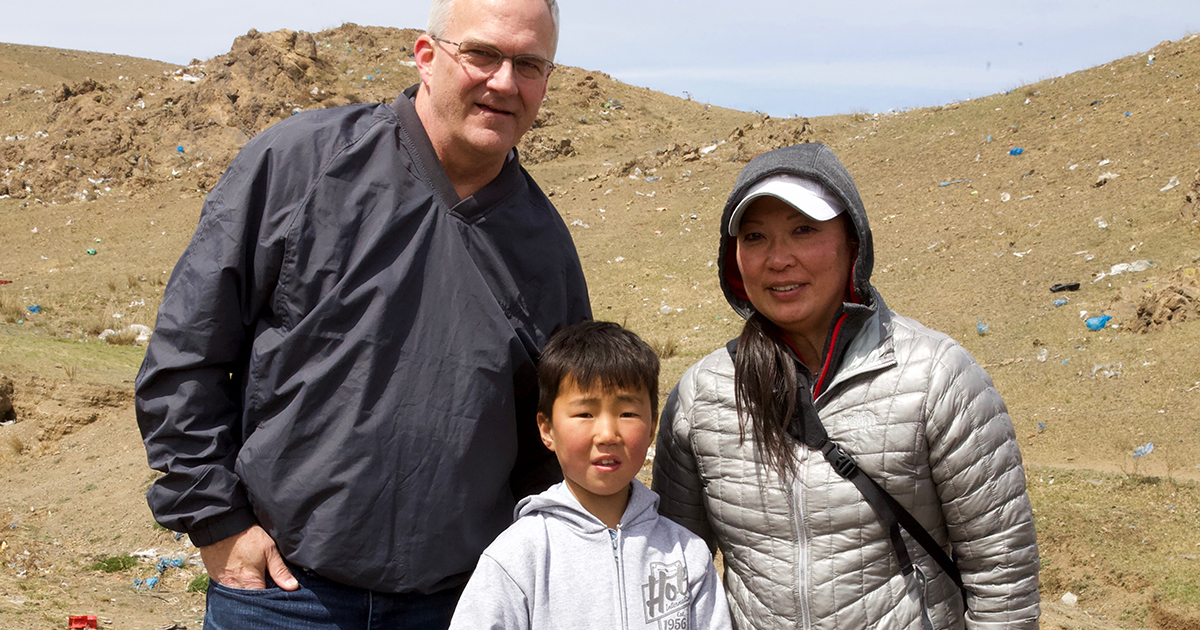
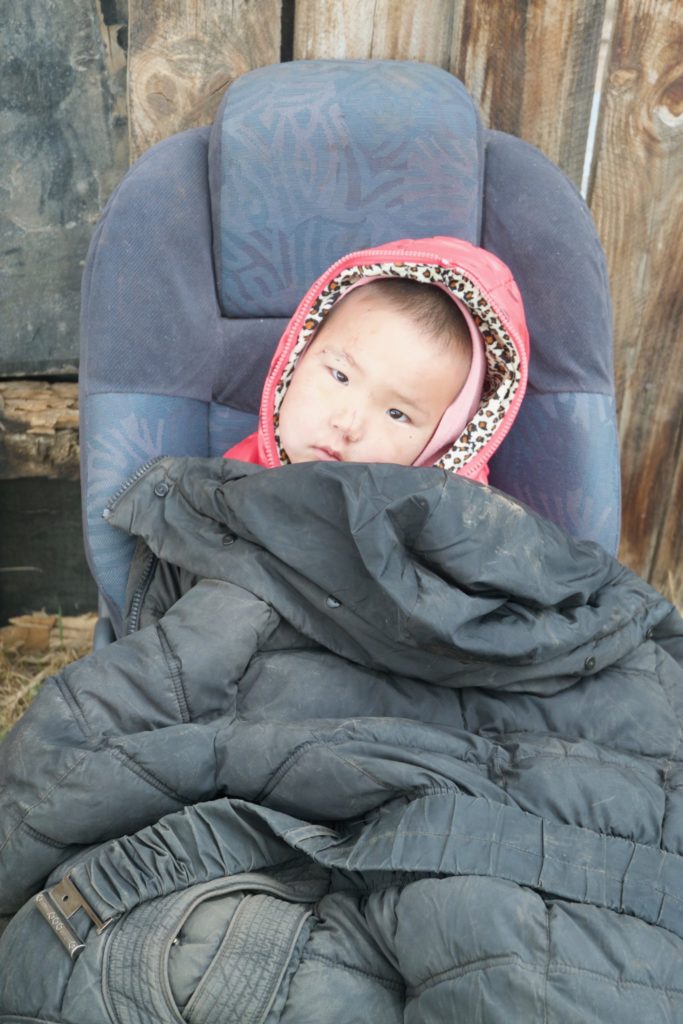
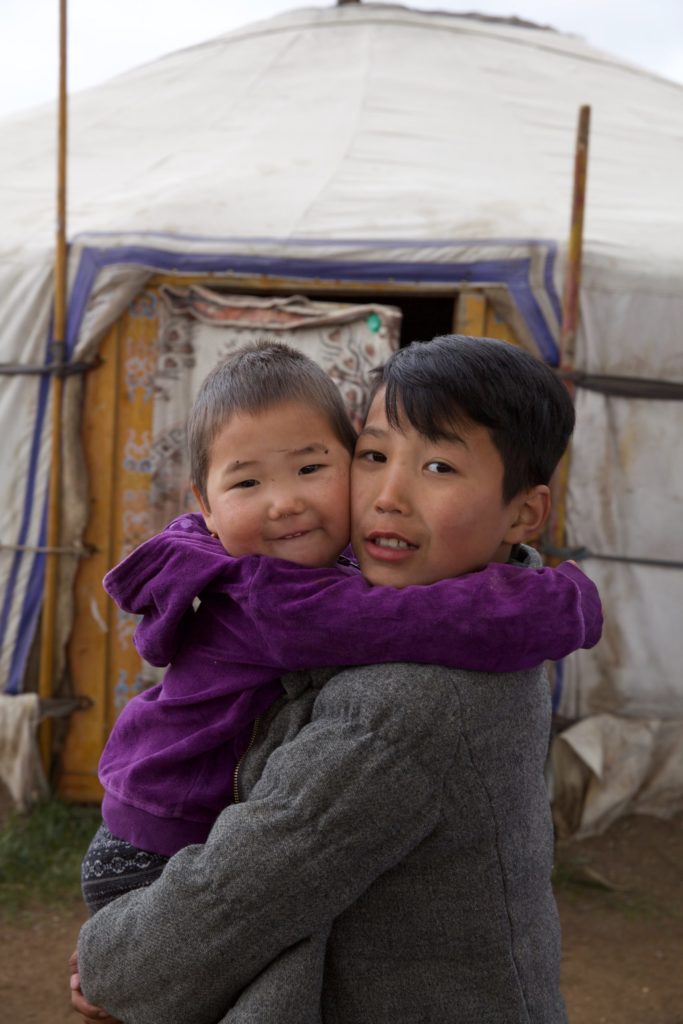
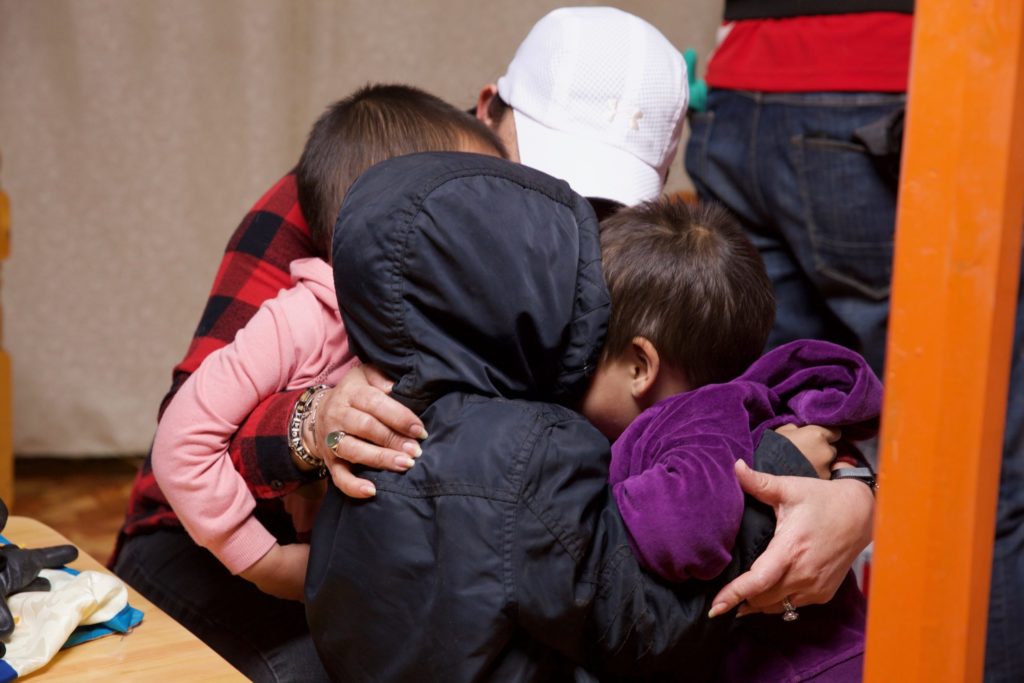
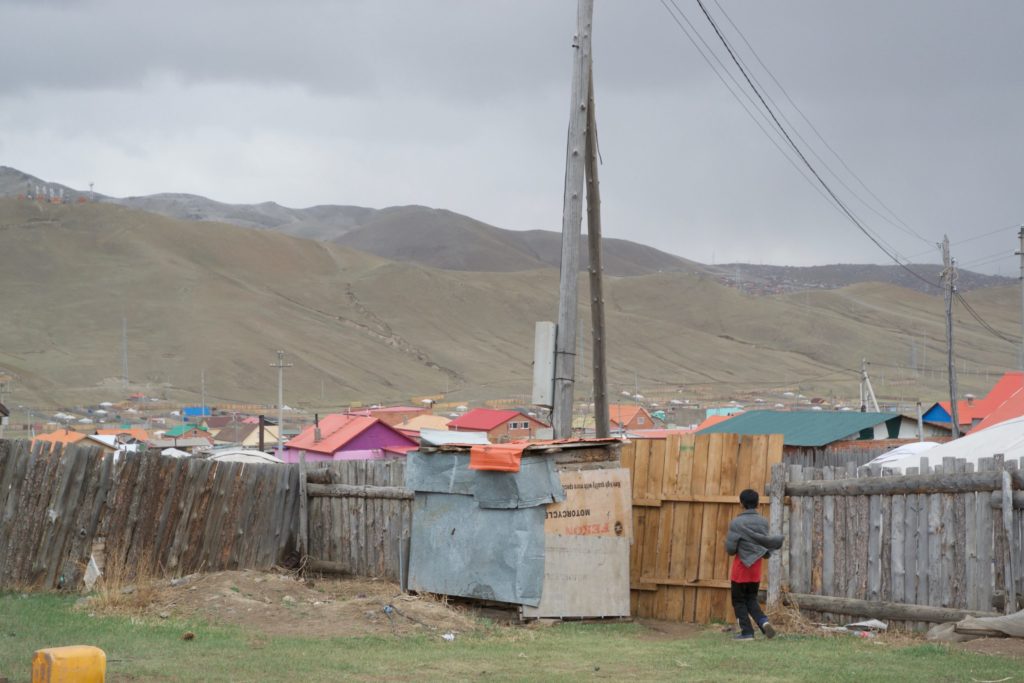
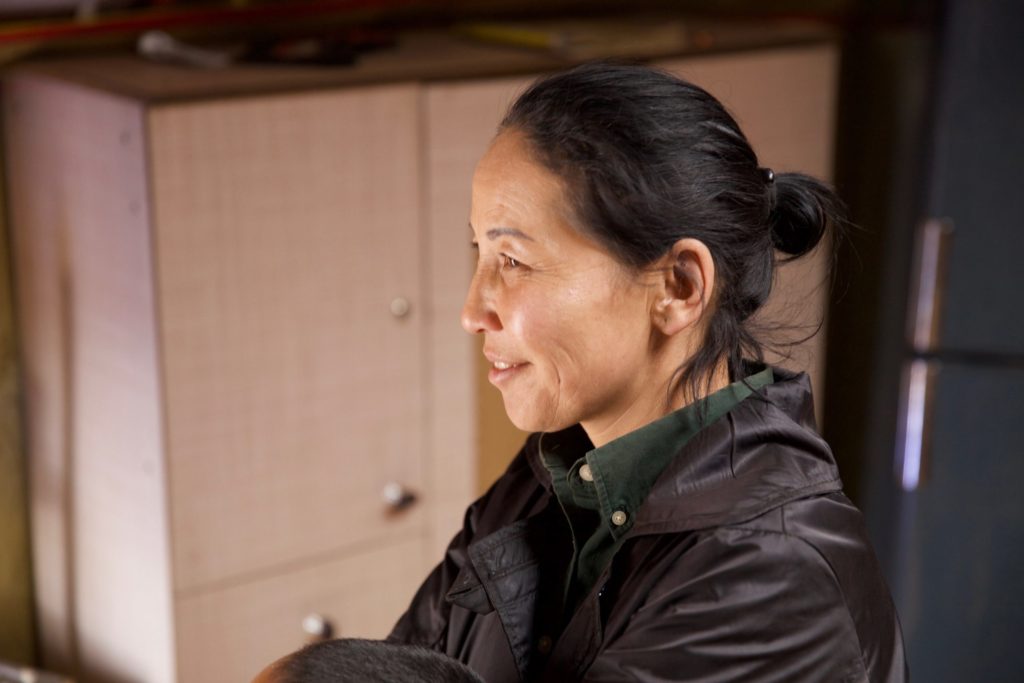
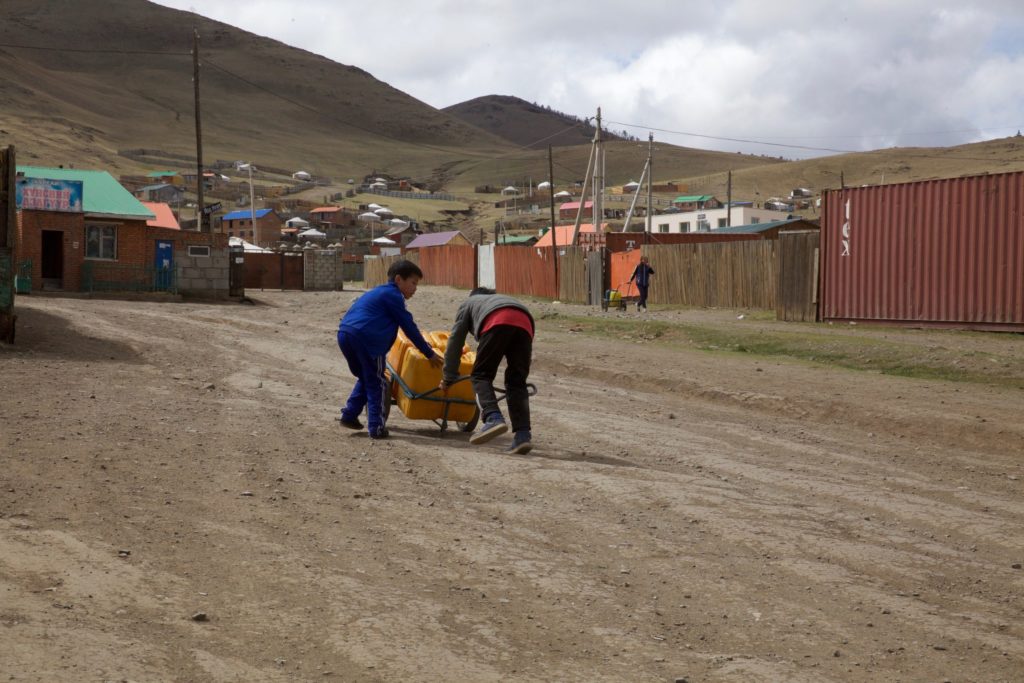
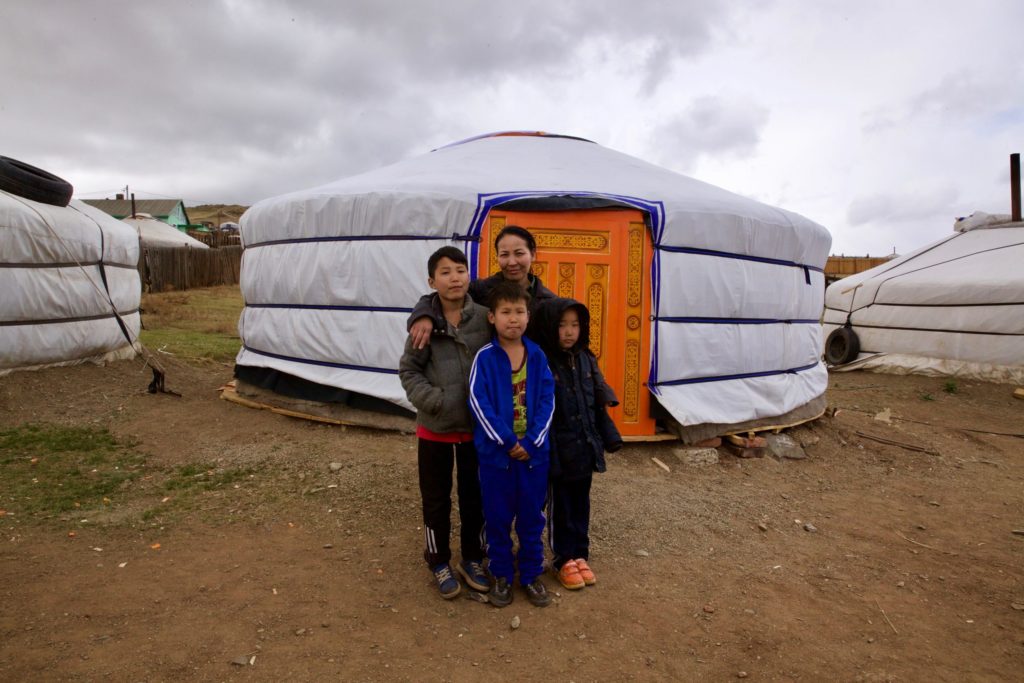
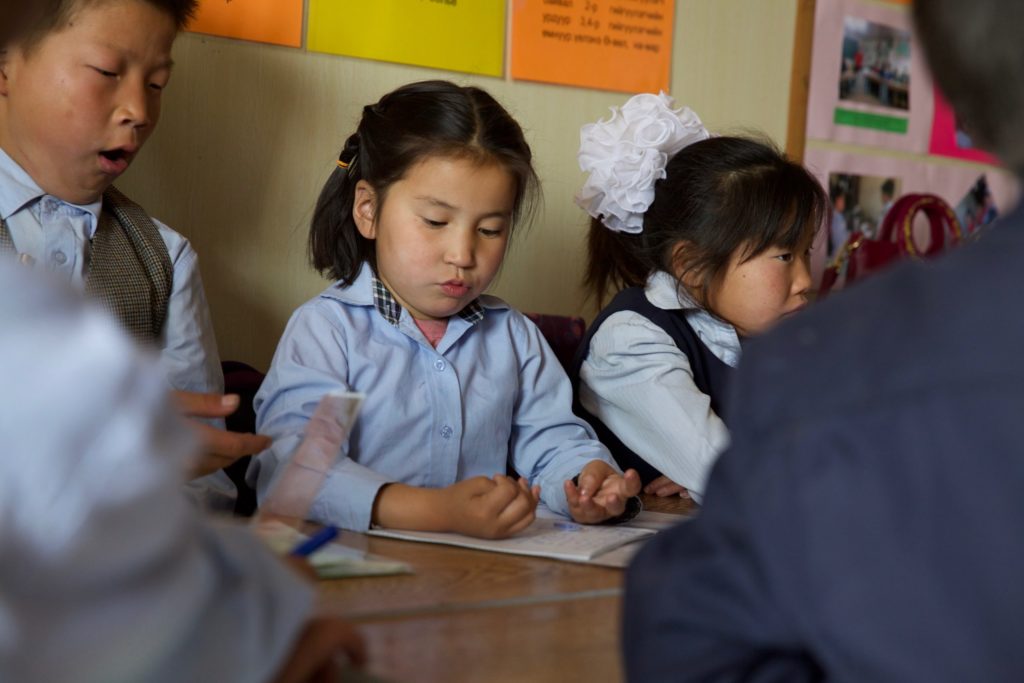
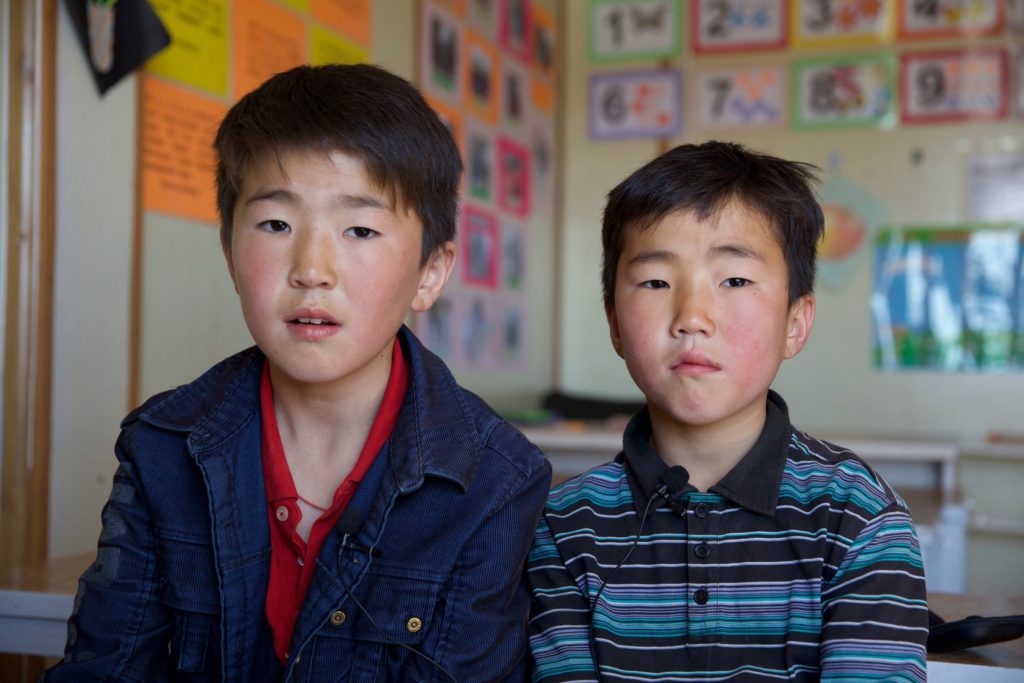
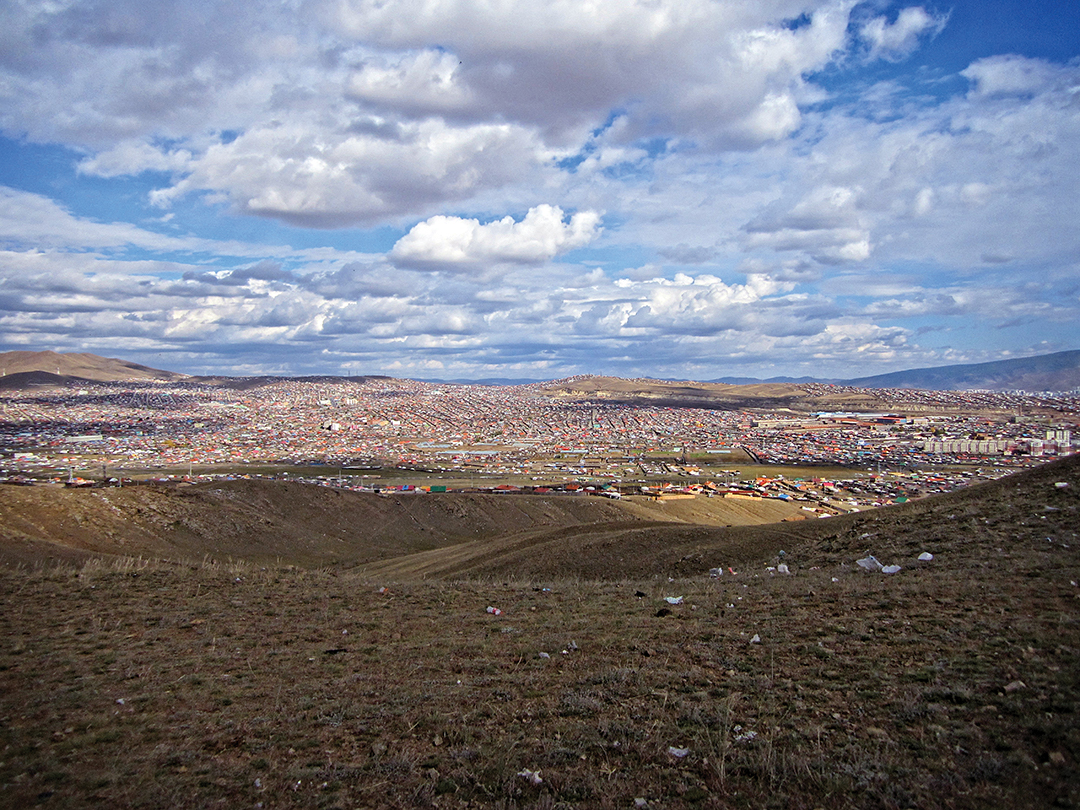
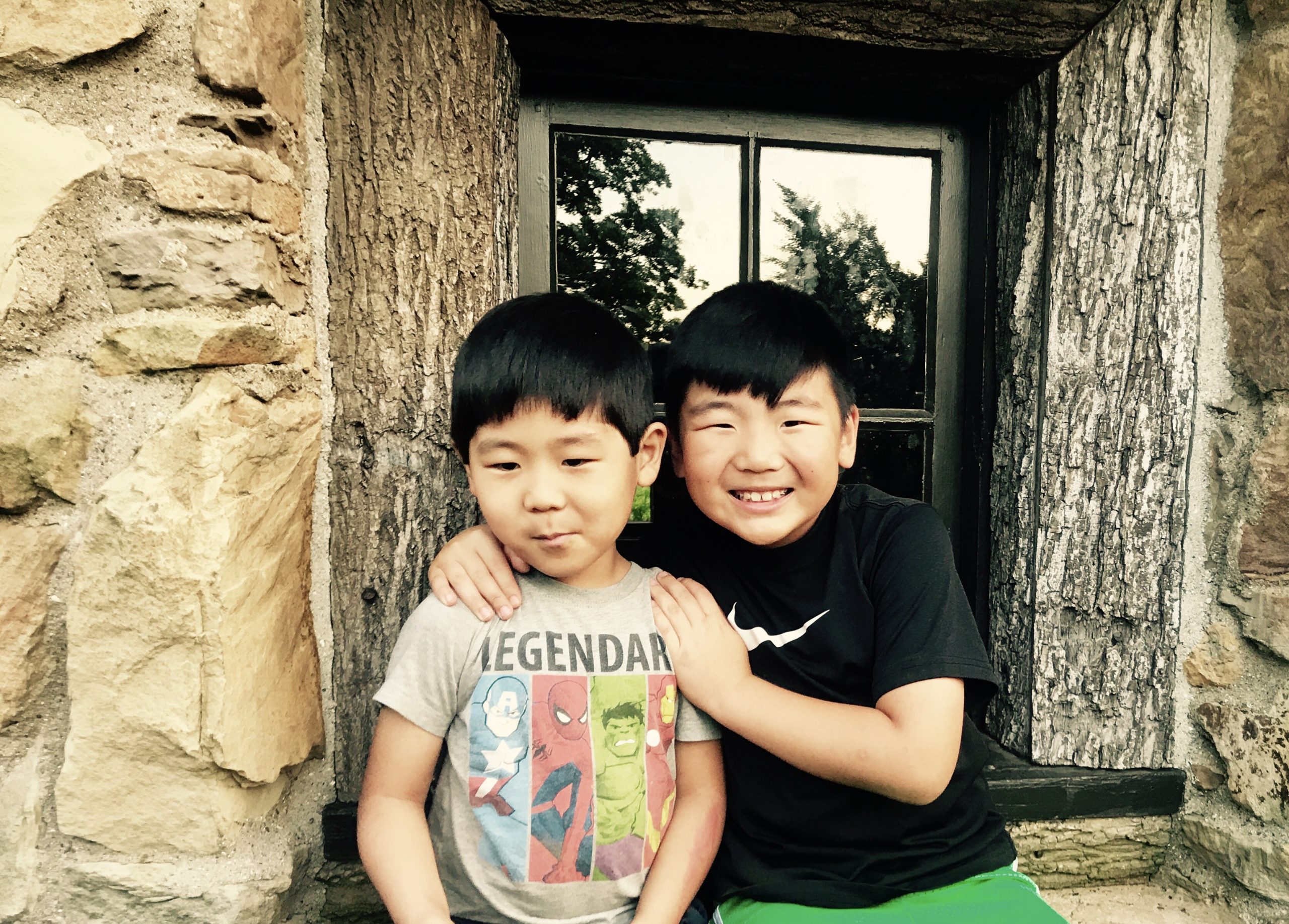
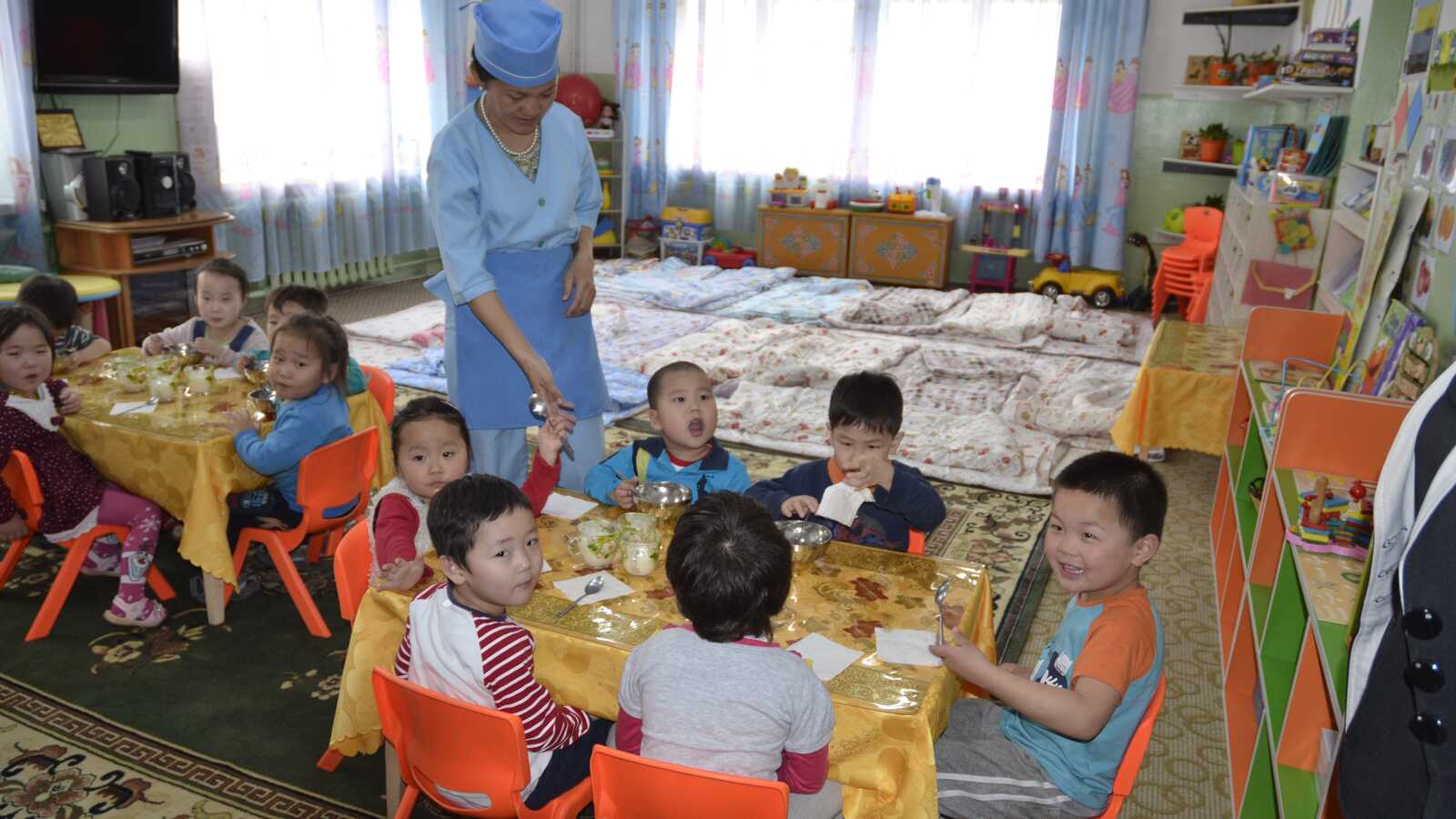
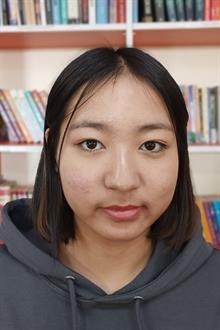
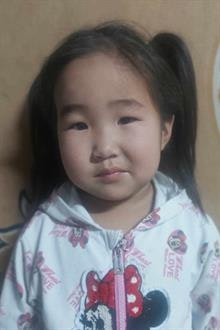
Robin and Daniel, this is simply an amazing piece that expresses so well what we experienced – thank you!
I am a Holt adoptee, age 60. I had tears in my eyes and a song in my heart ??. I am acquainted with Kim Hanson, thru DNA a distant cousin even. I am so proud and impressed with this entire team of individuals who gave of their time and wealth to make better, safer and more loving lives for all those involved. I dare say the “givers” received just as much joy as the “gifted to” recipients. How truly wonderful. I hope the lives of the young children will continue to be safe and healthy. Their smiles were a million dollar look. ? God bless you all. ?
Thank you for sharing. I was deeply moved. It would be nice to know how one can volunteer to support these initiatives. You are doing great life-changing work. Thank you!